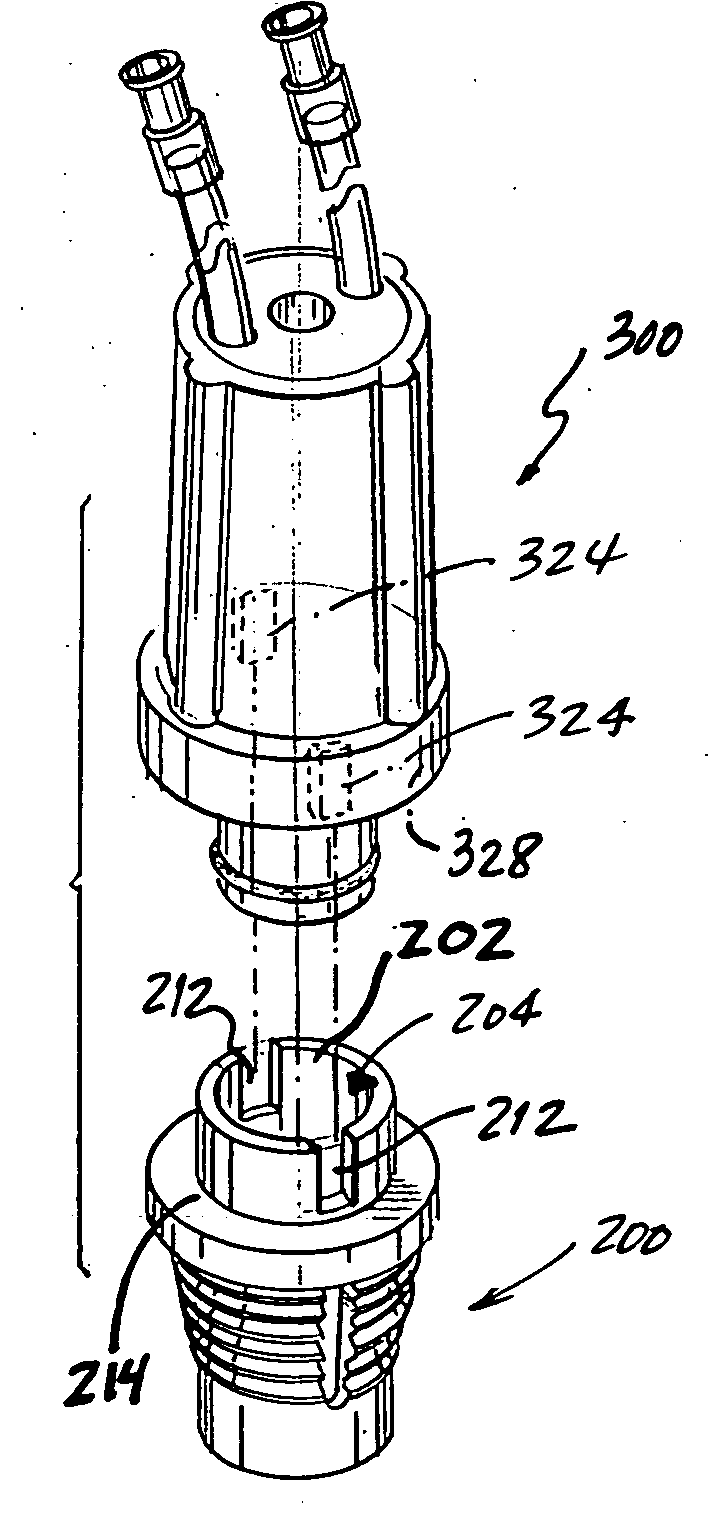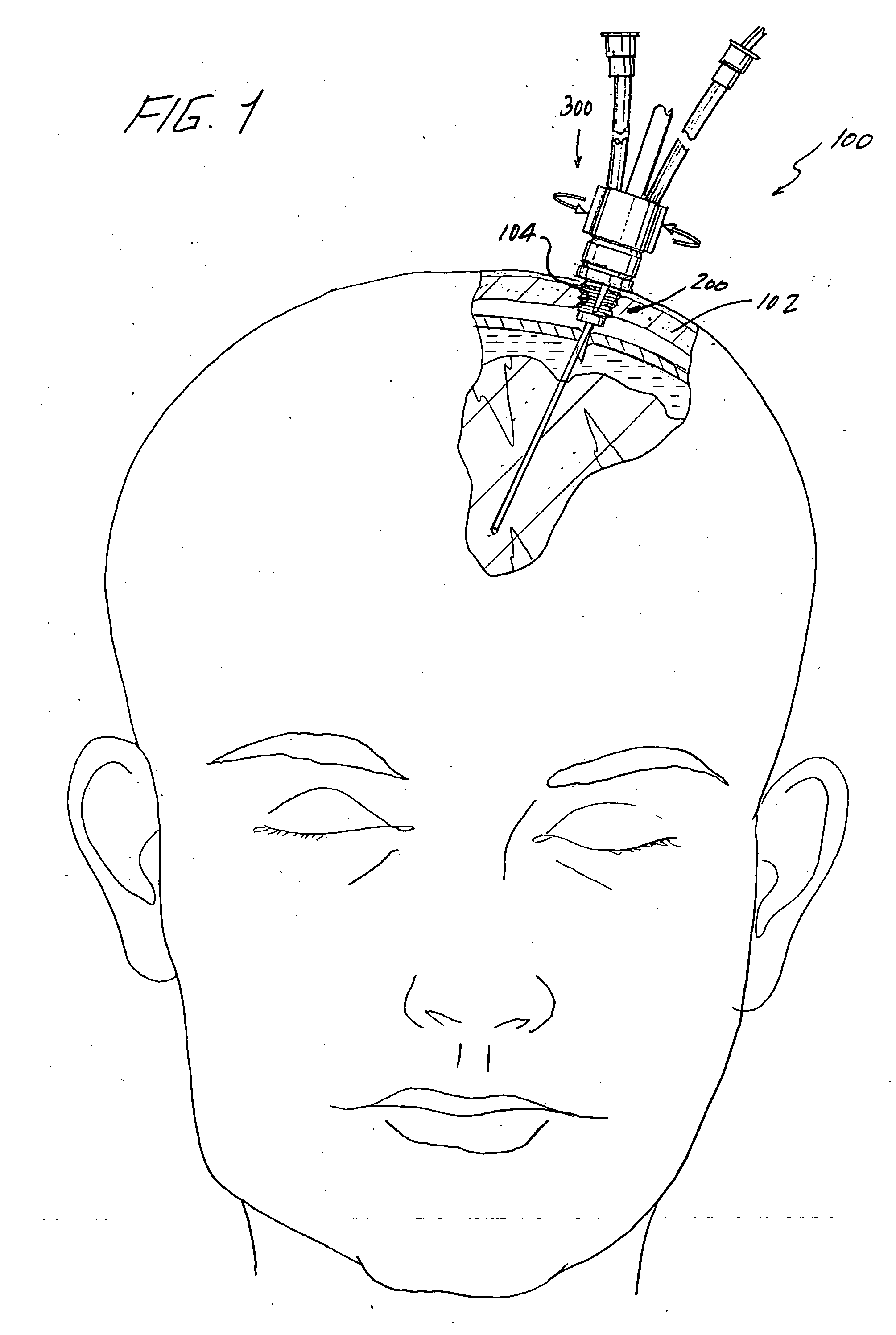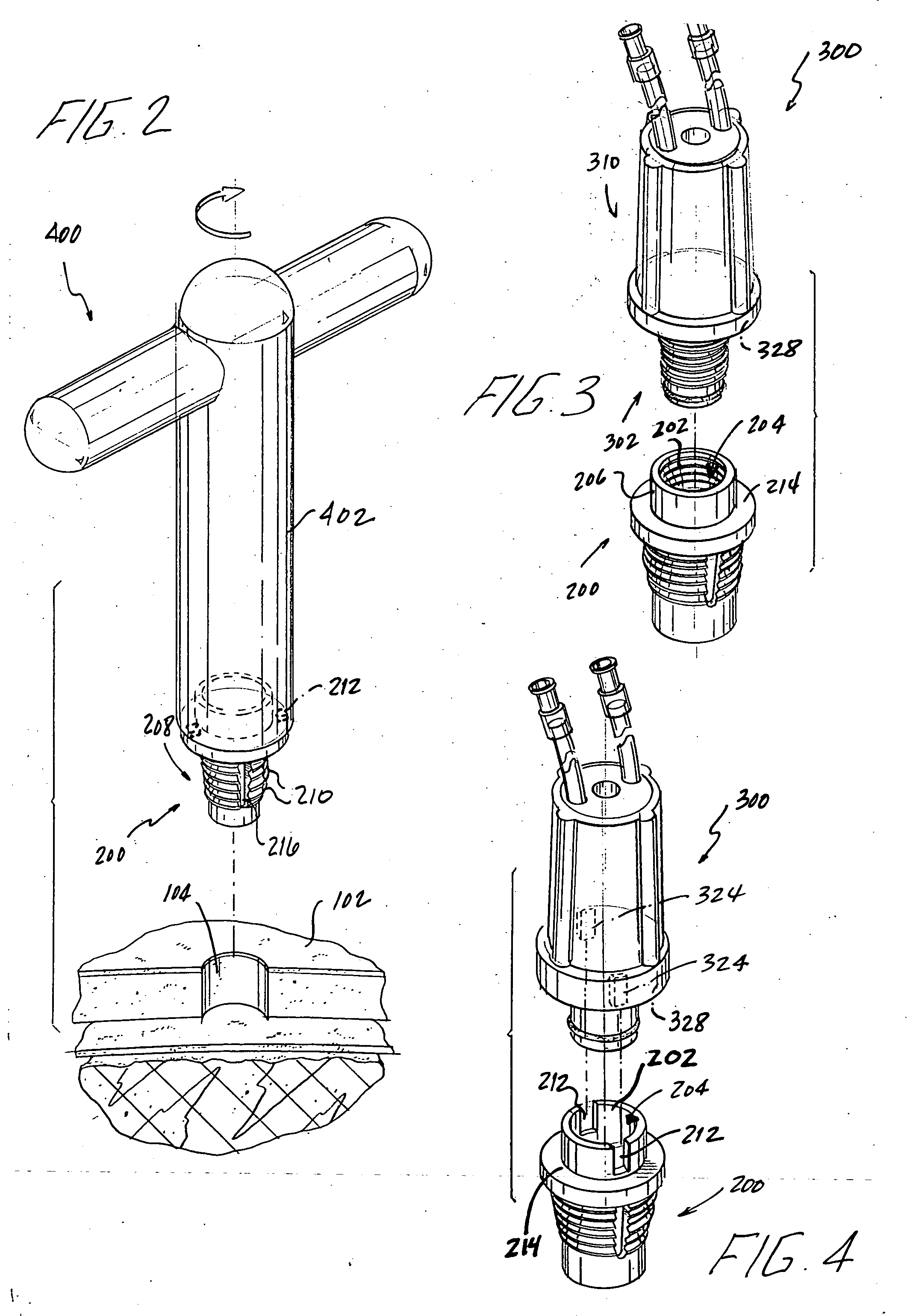Multiple lumen sensor attachment
a sensor and multi-lumen technology, applied in the field of two-piece cranial bolts, to achieve the effect of increasing the amount of torqu
- Summary
- Abstract
- Description
- Claims
- Application Information
AI Technical Summary
Benefits of technology
Problems solved by technology
Method used
Image
Examples
Embodiment Construction
[0033] Referring to FIG. 1, a cranial bolt 100 according to the present invention is illustrated secured to a skull 102 of a patient. Cranial bolt 100 includes a threaded portion 200 and a lumen portion 300. Threaded portion 200 has an inner surface 202 that forms a central passageway 204 (FIGS. 3 and 6). Central passageway 204 extends throughout the threaded portion 200 and is illustrated having a circular cross section, but can be any geometric shape, e.g. triangle, square, and pentagon (not illustrated). Further, central passageway 204 may not have a uniform diameter throughout its length.
[0034] Referring now to FIG. 2, threaded portion 200 also has an outer surface 208 with a plurality of threads 210 for engaging a hole 104 formed in skull 102 to fixedly engage threaded portion 200 to skull 102. Typically, a hole is drilled into a patient's skull using a burr drill and, in one embodiment, hole 104 is tapped, or threaded to provide threads for threaded section 200 to engage the ...
PUM
 Login to View More
Login to View More Abstract
Description
Claims
Application Information
 Login to View More
Login to View More - R&D
- Intellectual Property
- Life Sciences
- Materials
- Tech Scout
- Unparalleled Data Quality
- Higher Quality Content
- 60% Fewer Hallucinations
Browse by: Latest US Patents, China's latest patents, Technical Efficacy Thesaurus, Application Domain, Technology Topic, Popular Technical Reports.
© 2025 PatSnap. All rights reserved.Legal|Privacy policy|Modern Slavery Act Transparency Statement|Sitemap|About US| Contact US: help@patsnap.com



